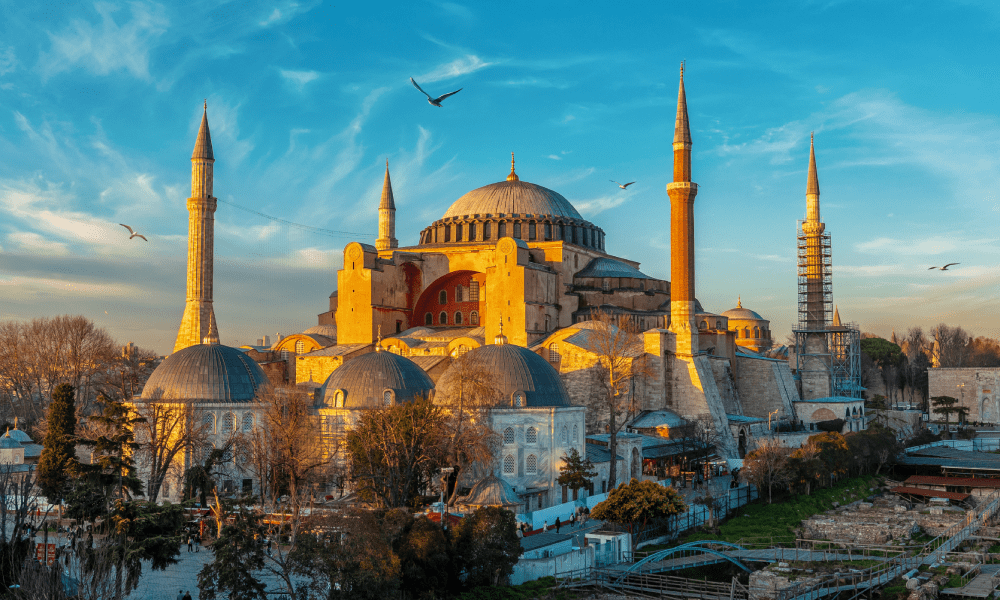Hagia Sophia represents Istanbul, Turkey, with its diverse and enlightening history. This magnificent architectural piece has witnessed the uprisings and falls of empires and served various religious communities for centuries. Let us delve into the spellbinding history and relevance of this iconic structure.
A Glorious Inception
The Hagia Sophia was originally constructed in 537 CE under the direction of the Byzantine Emperor Justinian I1. Designed by the architects Anthemius of Tralles and Isidore of Miletus, it was intended to be the world’s largest cathedral and a symbol of the Byzantine Empire’s wealth and technological prowess. For nearly a thousand years, it remained the largest Christian church in the world.
Architectural Brilliance
Among the amazing features that could be counted as fantastic and typical for Hagia Sophia was a huge dome – an appearance as if it sailed over the central nave. Such a feat was achieved by the innovative use of pendentives, which allowed a circular dome to be placed atop a square base. Especially beautiful mosaics decorate its interior, many of them dealing with religious scenes and figures, when the artistic achievement reached its height in the Byzantine period
A Centre of Religious Transformation
Hagia Sophia has always been the center of religious transformation. Conceived as a Christian cathedral, it was transformed into a mosque in 1453 after the Ottoman conquest of Constantinople. The Ottomans further added to the building with the addition of minarets among other Islamic architectural features that mixed the Christian origins of the building with its new Islamic character. In 1935, the Republic of Turkey secularized it and turned it into a museum that came to symbolize the commitment of the country to secularism and the preservation of its culture. However, in 2020, it was reconsecrated into a mosque to reflect its ongoing religious significance.
Cultural and Historical Significance
Apart from its architectural greatness, Hagia Sophia is an iconic representation of the rich cultural and religious diversity that has come to mark this great city of Istanbul. It was included in 1985 in the list of UNESCO World Heritage sites for its value to be considered within a historical and artistic context2. The fact that it may have had the potential all along to function as a place of worship for Christians and Muslims across the ages makes it one of the more significant bridging roles of the building across very diverse cultures and faiths.
Conclusion
The Hagia Sophia remains among the biggest landmarks in the world, a monument to the rich history and cultural variety that has always characterized Istanbul. Its architectural brilliance and the historical value of this building continue to impress millions of visitors every year, placing it among those sights which no person interested in the history of civilization can get away without seeing. Be it a cathedral, a mosque, or a museum, the Hagia Sophia is bound to remain an immortal sign of human achievement and a symbol of harmony among religions.




